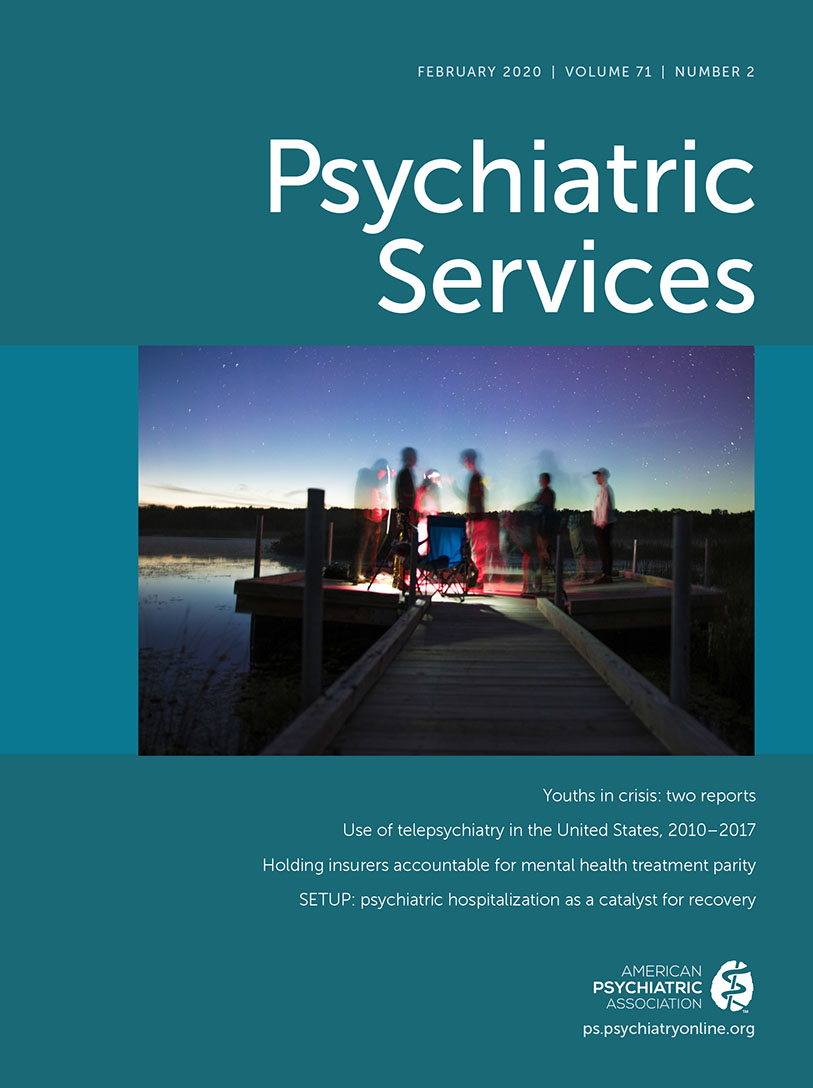Telepsychiatry Use in U.S. Mental Health Facilities, 2010–2017
Abstract
Objective:
The study examined the use of telepsychiatry in U.S. mental health facilities between 2010 and 2017.
Methods:
Changes over time in the availability of telepsychiatry were examined by using multiple waves of a national survey of mental health facilities. State and facility correlates of offering telepsychiatry in 2017 were examined.
Results:
The proportion of state facilities that self-reported offering telepsychiatry increased significantly from 15.2% in 2010 to 29.2% in 2017, with wide variability among states.. In 2017, facilities with telepsychiatry were more commonly publicly owned than to have others forms of ownership (odds ratio [OR]=2.72, 95% confidence interval [CI]=2.47–2.99, p<0.001), although the percentage of privately owned facilities offering telepsychiatry has increased significantly since 2010 (OR=2.94, 95% CI=2.14–4.05, p<.001). Facilities offering telepsychiatry had lower odds of receiving funding from Medicaid (OR=0.86, 95% CI=0.75–0.98, p<0.001) but higher odds of receiving funding from all other sources. Facilities in states that did not fund telepsychiatry had lower odds of offering these services in 2017 (OR=0.57, 95% CI=0.51–0.62, p<0.001). Telepsychiatry was more commonly offered in states with higher proportions of rural population (OR=1.64, 95% CI=1.45–1.85, p<0.001) and designated medically underserved areas (OR=1.36, 95% CI=1.25–1.47, p<0.001), compared with other states.
Conclusions:
Nearly twice as many U.S. mental health facilities offered telepsychiatry in 2017 than in 2010. Medicaid funding lagged behind other funding sources, suggesting state administrative barriers. Telepsychiatry was commonly used by facilities in medically underserved and rural areas.





